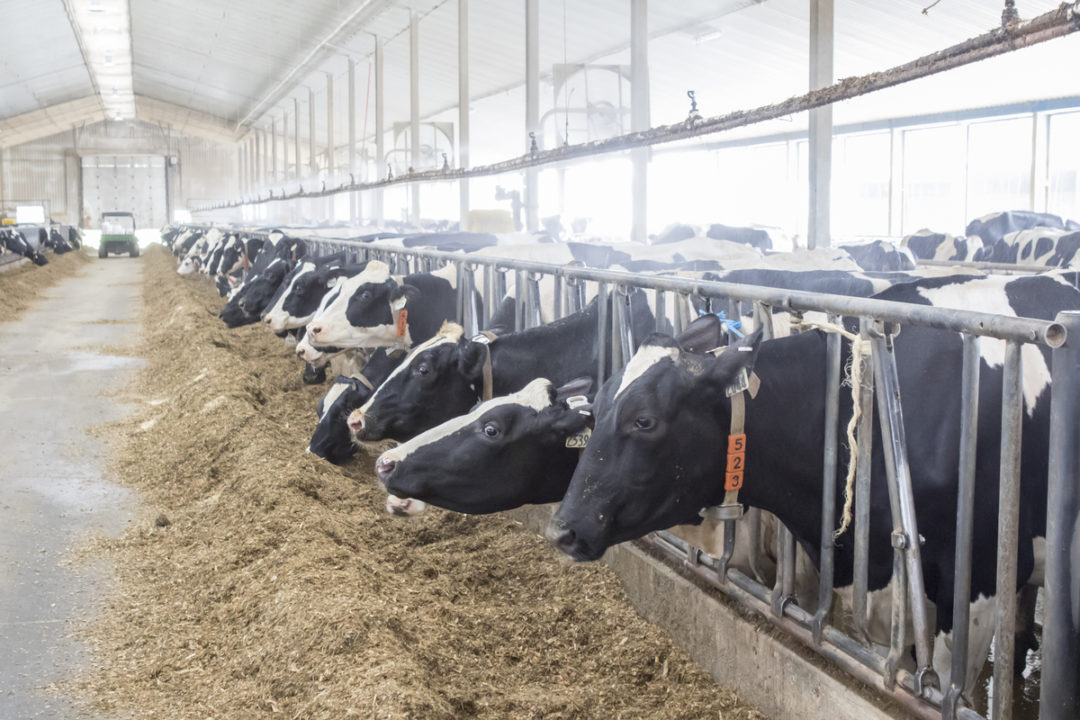Since 1944, the National Research Council has established basic nutritional guidelines and recommendations for dairy cows. Over the subsequent 75-plus years, this organization has generated eight sets of these reports, the last one being in 2001, so 20 years ago. Needless to say, a lot has changed in those 20 years.
This book of recommendations and guidelines has to this point been referred to by the name of the organization or by its abbreviation, NRC. For the new set, published in September 2021, the first and most obvious change is the name. This organization is now known as the National Academies of Sciences, Engineering and Medicine, or NASEM. The book itself is the Nutrient Requirements of Dairy Cattle, Eighth Revised Edition. Despite the name changes, it will still be referred to as the Dairy NRC.
Every new version includes summarizations of large amounts of data from countless dairy research studies conducted during the concurrent years from one issue to the next. For each new version, a committee is assembled of dairy industry professionals, most of whom work with either one of the leading dairy research universities or the USDA. The 2021 version was compiled by a committee of 12 individuals from institutions such as University of Maryland, Ohio State, University of California – Davis, Michigan State, University of Wisconsin and so on. An esteemed group, to say the least, and all individuals who have been deeply entrenched in the dairy nutrition world for decades.
So obviously, since 2001, there have been a variety of updates in our understanding of dairy nutrition, what produces milk, what supports components, what the lactating cow requires at different stages. We’ve also learned more about the various nutrients and how these molecules affect the animal at the cellular level, either individually or in combination. Additionally, a considerable amount of work has been done with the wide range of feed and forage ingredients we have available for use, in particular, understanding digestibility of these ingredients.
The primary task of the committee was to comprehensively analyze recent research on the feeding and nutrition of dairy cattle (all phases), the amounts of amino acids (AAs), lipids, fiber, carbohydrates, minerals, vitamins and water needed by pre-weaning, growing, reproducing and lactating dairy cattle. Additionally, they were to evaluate new information on improving the accuracy of predicting animal performance from nutrient input and of predicting nutrient input when animal performance is known. Finally, a computer model was developed to reflect the discussion and equations developed from their analyses of the research. Obviously, this was a very big job.
Some of the prominent changes in the 2021 NRC
Obviously, there is not room here to comprehensively report on all the changes in the new Dairy NRC. The following will attempt to touch on the more significant changes made since 2001. The summaries are also adapted from several sources, including a paper delivered by Bill Weiss at the Cornell Nutrition Conference in 2021 and oral presentations given by several committee members at the American Dairy Science Association conference in June 2022.
1. Dry matter intake estimation
Milk yield is strongly correlated with dry matter intake (DMI). As such, production levels have to be factored in in order to more accurately estimate DMI. The new NRC includes an improved animal factor with more data, particularly from high-producing animals. The new equations also include dietary components such as forage NDF, IVNDF digestibility and ADF/NDF digestibility. Including these and other dietary components help reflect the effects of the diet itself on DMI.
2. Amino acids and protein
Of all the sections of the NRC, the amino acids and proteins section probably has the greatest amount of change from 2001. A big part of this is based on a more prominent view of digestibility estimates for rumen-undegraded protein (RUP). This is largely related to a much larger database of ingredients developed since 2001. New values for metabolizable protein (MP) now do not include endogenous protein, which actually does not cause an increase in MP. A new response model was developed and implemented that is based on a projection that amino acids and energy supplies in the diet should produce a certain amount of milk protein. The model goes on to include more amino acids than lysine and methionine. It now includes these plus leucine, isoleucine, histidine and total essential AAs. The equation to estimate milk protein yield illustrates a very extensive combination of AA profiles can result in similar MP yields, so a specific AA profile is not necessary to achieve a given result. Finally, the efficiency of converting metabolizable AA to MP is not a fixed number but can vary depending on the overall supply of total essential amino acids.
3. Energy
The new NRC corrected a source of error found in the 2001 report. Based on equations used to estimate energy valuations for various ingredients and how these values (based on digestible energy [DE] or net energy lactation [NEL]), it was determined that these values were underestimated for high-producing, high-DMI cows. The source was either the overestimation of NEL requirements or an underestimate of diet NEL concentrations. Since a variety of discounts had been in place on the dietary values, it was determined that these discounts may have caused the errors. These initial values were set based on extrapolations from research where non-lactating cows were fed maintenance diets and subsequently underestimated DMI projections. More recent data incorporated digestibility values collected from lactating cows with a DMI ranging from 1.7% to 4.6% of bodyweight. The average DMI for the dataset was 3.5%, and this was set as the base for the new NRC. The main implication here is that the extrapolation is much less than before.
Another effect included was that of dietary starch on NDF digestibility since starch can negatively affect NDF digestibility. The dietary starch base was set at 26% DMB.
A new set of starch digestibility coefficients were established for a number of selected feeds commonly used for energy and starch sources. Some of these are shown here in Table 1.

4. Minerals and vitamins
Changes in the mineral section of the NRC were relatively small but included:
- Actual calculation of requirements for all macrominerals and copper and zinc.
- Other minerals were described in terms of “adequate intake” and applied to cobalt, manganese, iron, iodine and selenium. This term apples in situations where the committee believed that if a specified amount of a mineral is consumed, the cow will function normally.
- Calcium maintenance requirement increase but this was countered by an increase in Ca absorption coefficients.
- Phosphorus requirements did not change significantly, but the new Dairy NRC calculates an absorption coefficient (AC) from the chemical form of P within a feedstuff.
- AC for magnesium supplements were reduced by more than 50% while magnesium AC in feeds increased 50%.
- Maintenance requirement for copper is about two times higher when compared to the 2001 report, but the lactation animal requirement was about three times too high.
- Vitamin levels for A, D and E were the same as 2001, although vitamin A requirements for cows giving greater than 35 kilograms of milk increased by about 1,000 kilograms of milk.
Conclusions
Certainly, this is a limited list of the many changes in the new 2021 Dairy NRC. Overall, it appears one of the greatest positives for the new report/recommendations is that a greater amount of data was available from the many studies run over the last 20 years. This certainly helps improve the accuracy of estimates and calculations. No doubt this will also elicit changes in the various dairy formulation models used to build diets. As useful as all this data is, it remains absolutely important to analyze feeds and forages going into actual rations.










